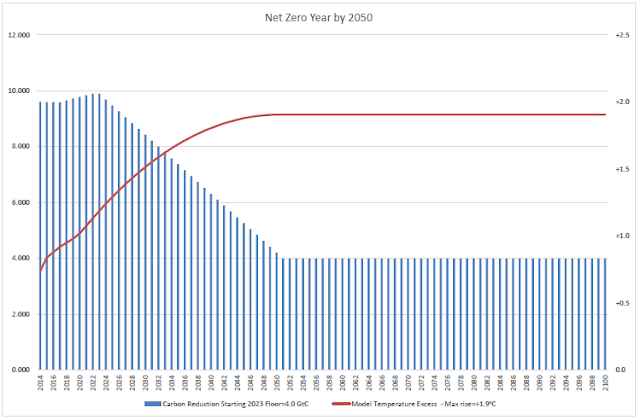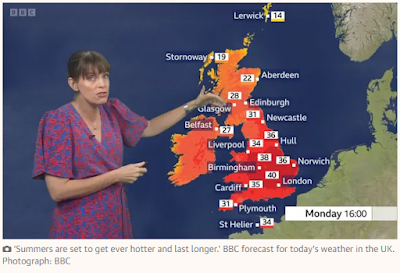After COP27. Fixing the climate is still possible if both sides compromise, by following the science and logic. Both sides; the fossil fuel industry and climate activists believe they are fighting for survival, with their backs against the wall. Fossil fuel send in their lobbyists to get the politicians and decision makers on side, while climate activists send in their protesters to use ever more extreme measures to get them to do what they want. Both sides see this as a zero sum game. One side wins and the other side loses – complete victory or annihilation. But a win-win compromise is possible, if we follow the science. If we don’t, then if fossil fuels win, that is certain annihilation for at least half the planet’s population, but if climate activists stopped fossil fuels completely, the result might not be very different.
We needs a fresh perspective, using established ideas in a new configuration, to create a plan that puts climate change back in Pandora’s Box.
To reduce extreme climate events we need a plan that doesn’t just halt global overheating, but cools things back down to safe levels.
The plan must also be acceptable to many different parties, all with very different demands, so compromise will be necessary.
The plan must be rigid enough to be certain to work, while being flexible enough to adapt to changing circumstances.
I believe that a global cap and trade market for the extraction of carbon by fossil fuel and similar organisations is the key to the solution. Cap and trade is already in use for carbon emissions, but only in limited circumstances. Capping carbon extraction with a global quota would be comprehensive and efficient. This is why the Fossil Fuel Non-Proliferation Treaty has received so much support from organisations like the World Health Organisation, the Vatican, and the European Parliament – it addresses the supply of carbon in fossil fuels, not the consumption and consequent emissions of carbon dioxide (CO₂). Note that it was phasing out the supply of CFCs that meant the Montreal Protocol worked to save the ozone layer. It was not persuading consumers to stop buying aerosol cans with CFCs in that solved that atmospheric problem. Limiting the supply is far more efficient and certain than trying to limit the demand.
What about Big Oil? This is where we have to start compromising. We now know that Big Oil has been using its massive wealth to spread denial, delay and distraction about climate change so they can carry on business as usual. They still have massive lobbying power, which can scupper any plan that looks like driving them out of business. To them it’s a matter of survival – an existential threat. Luckily the plan allows them to survive, but with reduced volumes. This is where Big Oil needs to compromise, but increased prices for a smaller supply might even increase their profits. The science as to why fossil fuels in smaller volumes can still be extracted and burned is that CO₂ is sequestered naturally in large quantities, mostly in the oceans. If levels of fossil fuel extraction are reduced to well below where their CO₂ emissions balance natural sequestration, (Net Zero Carbon), then more CO₂ will be drawn out of the atmosphere than is added to it, and we start to reduce atmospheric CO₂ and consequently start to cool the planet. According to the scientists at Climate Interactive, fossil fuel extraction needs to reduce to about 20% of current levels. This reduction would happen gradually but inexorably, so that markets can adjust to replace the lost energy with renewables and efficiency savings. The reduced quotas would be totally predictable for decades ahead, and so can be planned for by any competent government.
What about helping the developing nations which are disproportionately impacted by extreme climate events? They arguably need to be compensated for the damage, partially caused by heavily industrialised nations emitting most of the CO₂. It’s debatable who is most responsible, after all, there is hardly anyone on the planet who isn’t at least indirectly responsible for CO₂ emissions. Also, because of that natural sequestration mentioned earlier, hardly any really old CO₂ emissions are left in the atmosphere. So let’s take a different approach that avoids the blame game. Let’s use the cap and trade market this plan is built on to move wealth around. That global carbon extraction quota that will be traded has value. Every barrel of oil that is extracted from the ground will need the extracting organisation to have purchased matching quota from the market. What if that quota starts as the common right of every person on the planet? Selling that quota to the market will spread wealth to developing nations, which will create a more stable world. It might be necessary to allocate the quota to countries, based on their population size, rather than giving it directly to individuals. Although, especially in the developing world, phone based financial transactions are very common.
This plan has several advantages over the Paris Agreement and the various COP arrangements. Because it is global plan it is not dependent on how efficiently each nation performs, although each nation would have to audit the organisations extracting carbon in their boundaries. The global carbon extraction quota can be extended to cover forestry and other sources of carbon. In fact it would need to, since otherwise carbon sources such as peat present too tempting a target.
What if nations refused to join or left this market? Sanction for those who don’t join would have to be extensive, and to make it more difficult to leave, the market should be organised like a trade treaty, with independent courts having jurisdiction higher than national courts. This already happens under treaties such as in EFTA or CPTPP.
Offsets are a bit of a problem. Carbon quota offsets probably need to be divided into permanent and temporary CCS (Carbon Capture and Storage).
This plan for a global carbon extraction quota market would replace nearly all other CO₂ emissions reduction measures, since few other measures are necessary. Cement production is the biggest other source of CO₂ emissions. This could of course be included by treating the carbon in the CO₂ emissions as needing quota.
What about other greenhouse gases? CO₂ is the main problem, overshadowing all other greenhouse gases, both in terms or radiative forcing and rate of growth. So controlling CO₂ in the carbon cycle is the key objective. This might change if too many feedback tipping points kick in. As global temperatures increase, we dance closer and closer to the tipping point cliff. This cliff is more like a series of crumbling ledges than an abrupt edge. If too many ledges crumble, all bets are off. So the sooner we retreat from the cliff edge, by cooling the planet, the better.
At current EU carbon quota prices of about €50 per tonne, this carbon market would be worth about half a trillion dollars each year, or over $60 per person. This would put about $5 on to the price of a barrel of oil, so about 5%. A small price to pay to save the planet. This price will of course change over time as the carbon quota reduces but will depend on future demand for fossil carbon. Arguably, this control of supply is just a more extreme form of what OPEC does, to keep the price high by rationing supply.














